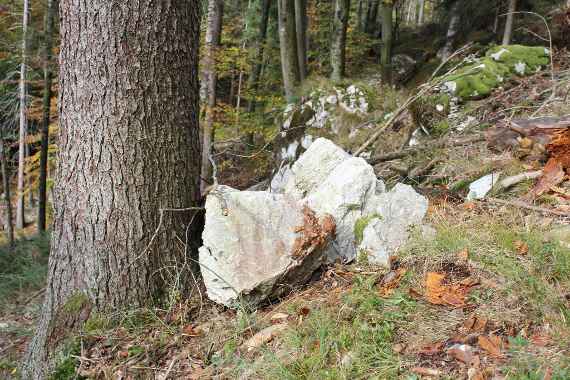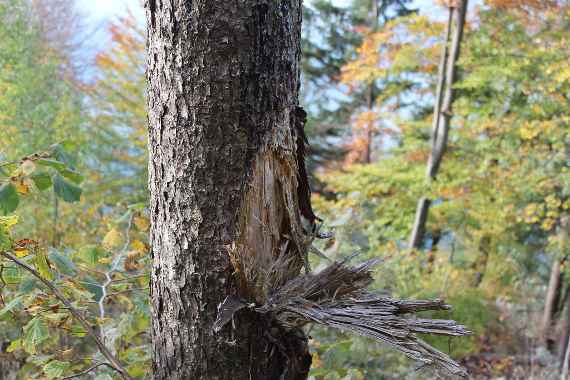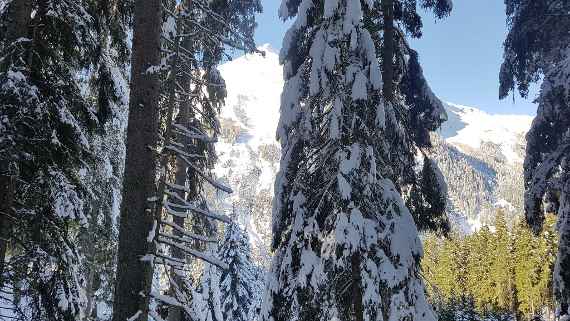In the protective forest there is one primary goal: A healthy and stable forest stand with the best possible protection against natural hazards. The roots of the trees help stabilizing the soil on steep slopes, hold back rocks and together with the ground vegetation protect against erosion and landslides. Depending on the prevailing natural hazard the forest may reduce, slowdown or completely stop the process. In the event of rockfall the stems slow down the rolling and tumbling stones and in addition the softer forest soil absorbs energy. When it rains the pores of the ground can store a lot of water and thus reduce the risk of flooding. In winter the treetops catch snow and due to reduced wind speeds the snow cover in the forest is usually stratified in a more stable condition - this reduces the risk of avalanches!
Depending on the steepness and shape of the terrain, the density of the forest stand and the size, rocks and boulders will either be stopped completely or at least slowed down significantly.
Strike! If a rock is in motion gravitational force initially has an effect and it starts to slide, roll or jump, depending on the terrain. The soft forest floor has a damping effect depending on the surface condition, how much litter there is, or how stony the ground is. By hitting a tree the rock will slow down, additionally it changes its direction and will hit the neighbouring tree in the best case.
During winter one part of the snowfall is captured by needles and branches, in technical jargon this is called interception. Parts of the snow evaporates again, the other part falls down to the snow cover on the ground. These clumps cause a "disturbance" in the snow stratification, which further increases the stability of the snow pack and thus reduces the risk of avalanches.



